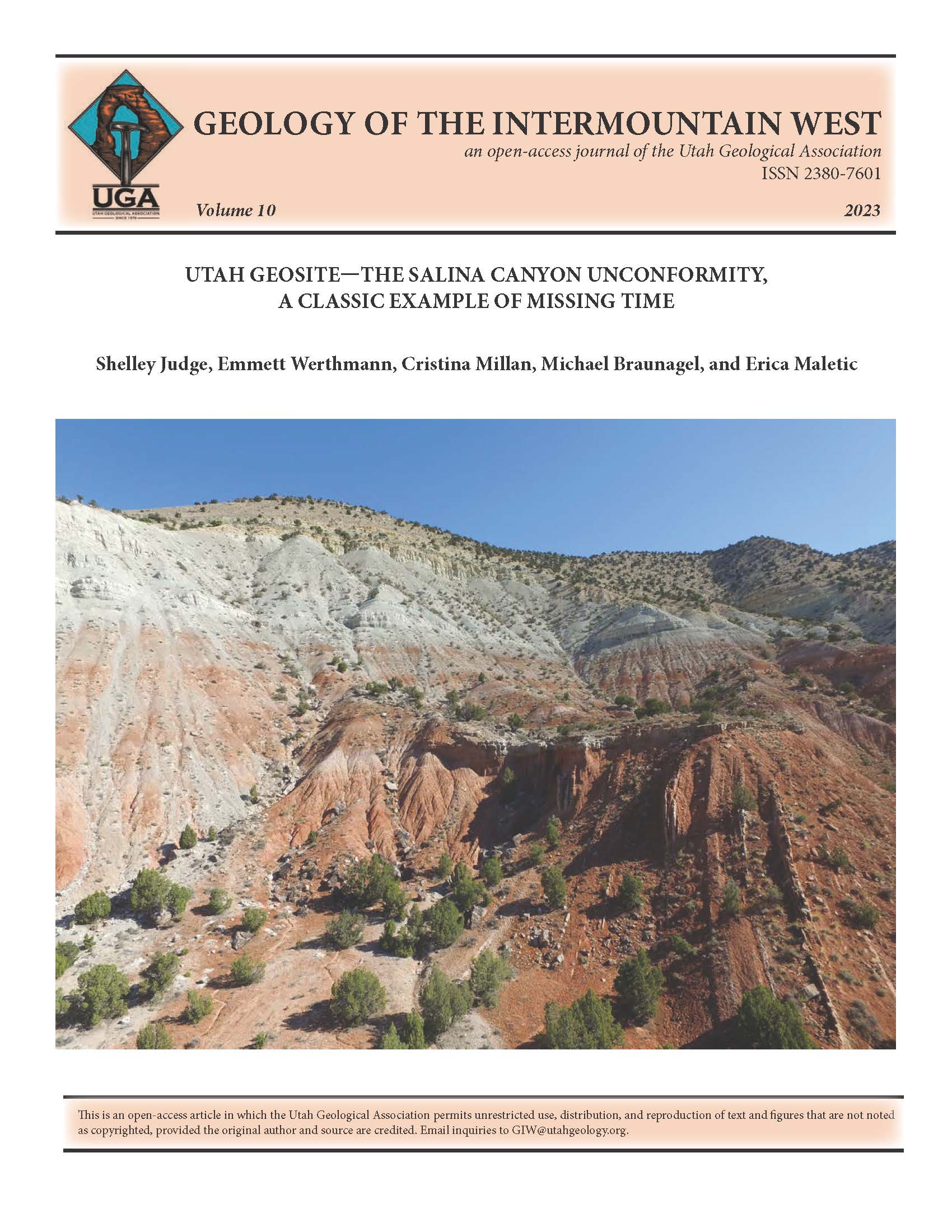Utah geosite—the Salina Canyon unconformity, a classic example of missing time
Abstract
Salina Canyon, Utah, reveals a spectacular angular unconformity along an east-west transect through the southern part of the Wasatch Plateau. This region of Utah is well known as the eastern extent of Sevier orogenesis, but it also includes subsequent extensional overprinting. Earliest descriptions of this unconformity were published by Dutton (1880) and Spieker (1946, 1949), and work continues today. Field relationships expose many classic stratigraphic and sedimentologic features of erosional surfaces. Due to the geometry of the progressive unconformity onto the topographic high of the Sanpete-Sevier Valley antiform, the angular discordance of strata results in a gap in time of greater than 107 million years in the west, decreasing toward the east to about 39 million years and finally to less than 17 million years. Paleosols and small-scale channels/scours with infilled basal conglomerates are also prominent along the unconformity, as are several mine adits. Because of its abundant geologic features, the Salina Canyon unconformity is a superb teaching and learning space for geoscientists and outdoor naturalists.

Copyright (c) 2023 Geology of the Intermountain West

This work is licensed under a Creative Commons Attribution-ShareAlike 4.0 International License.




